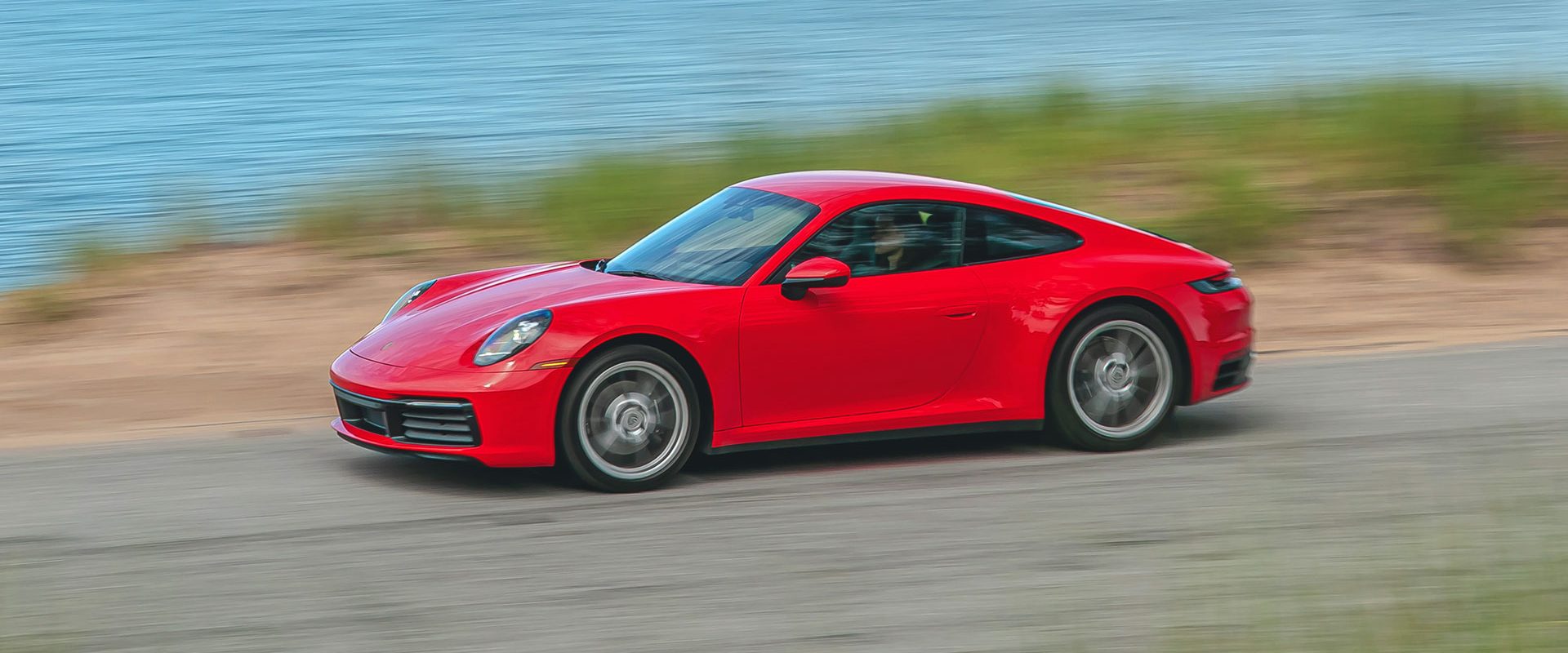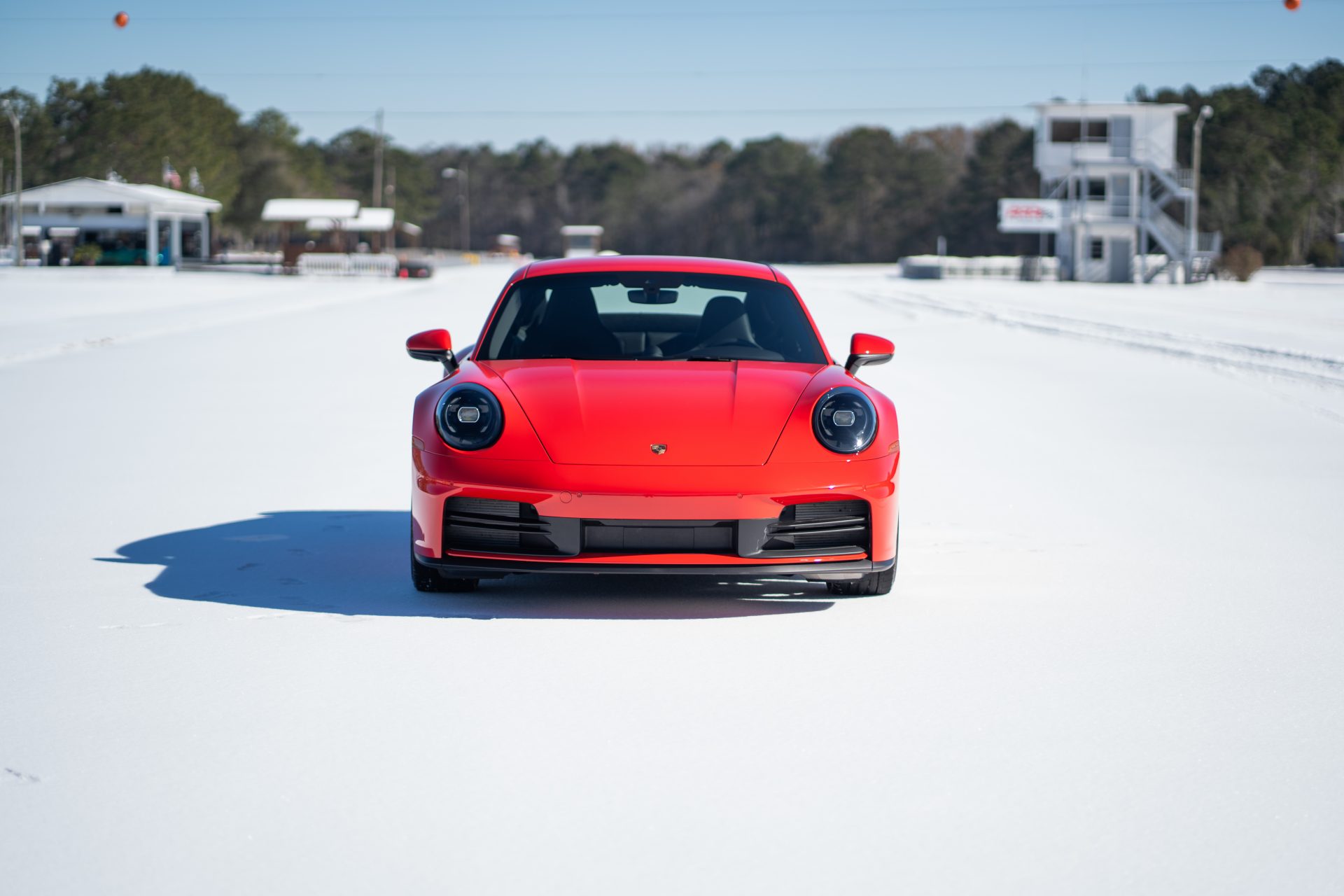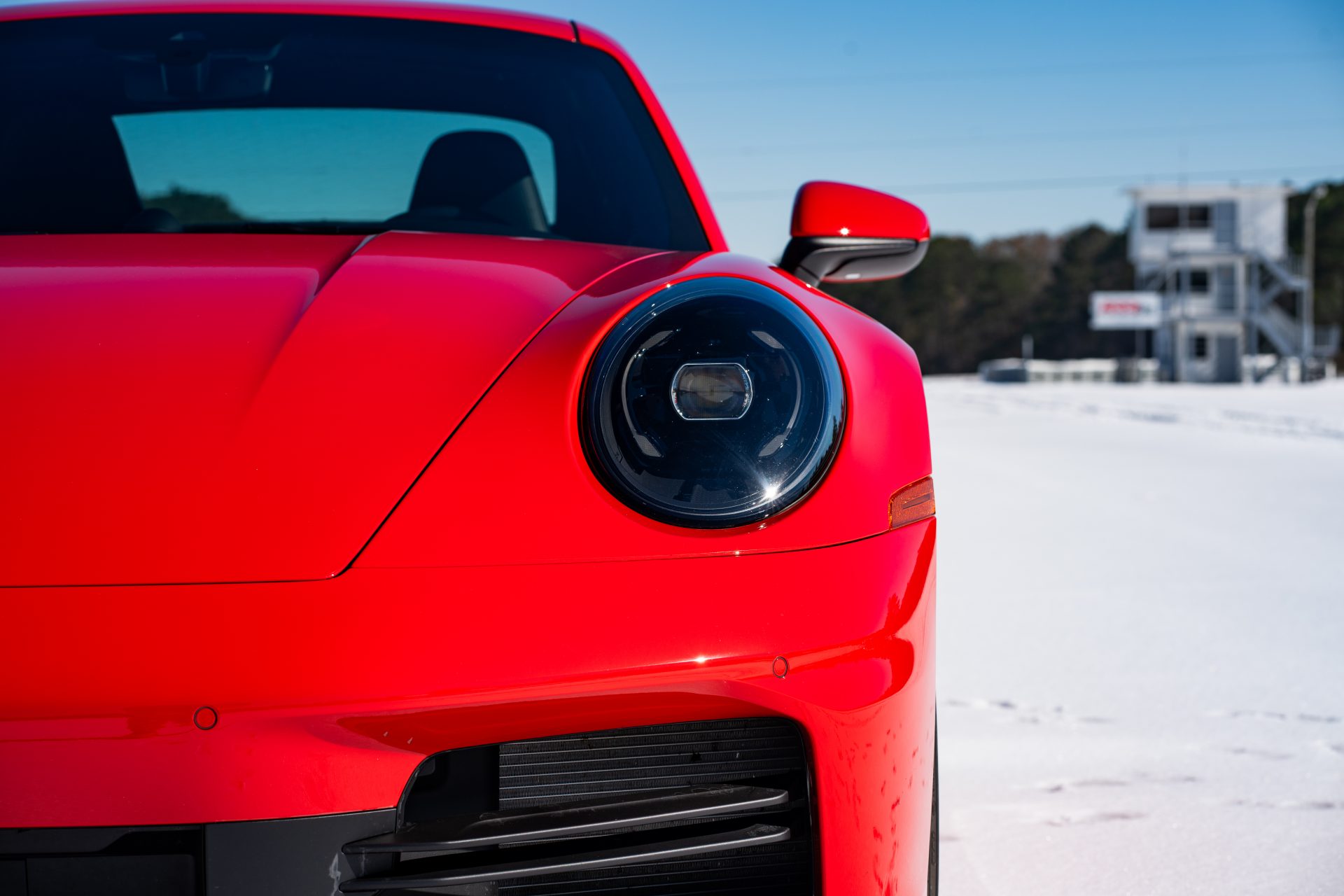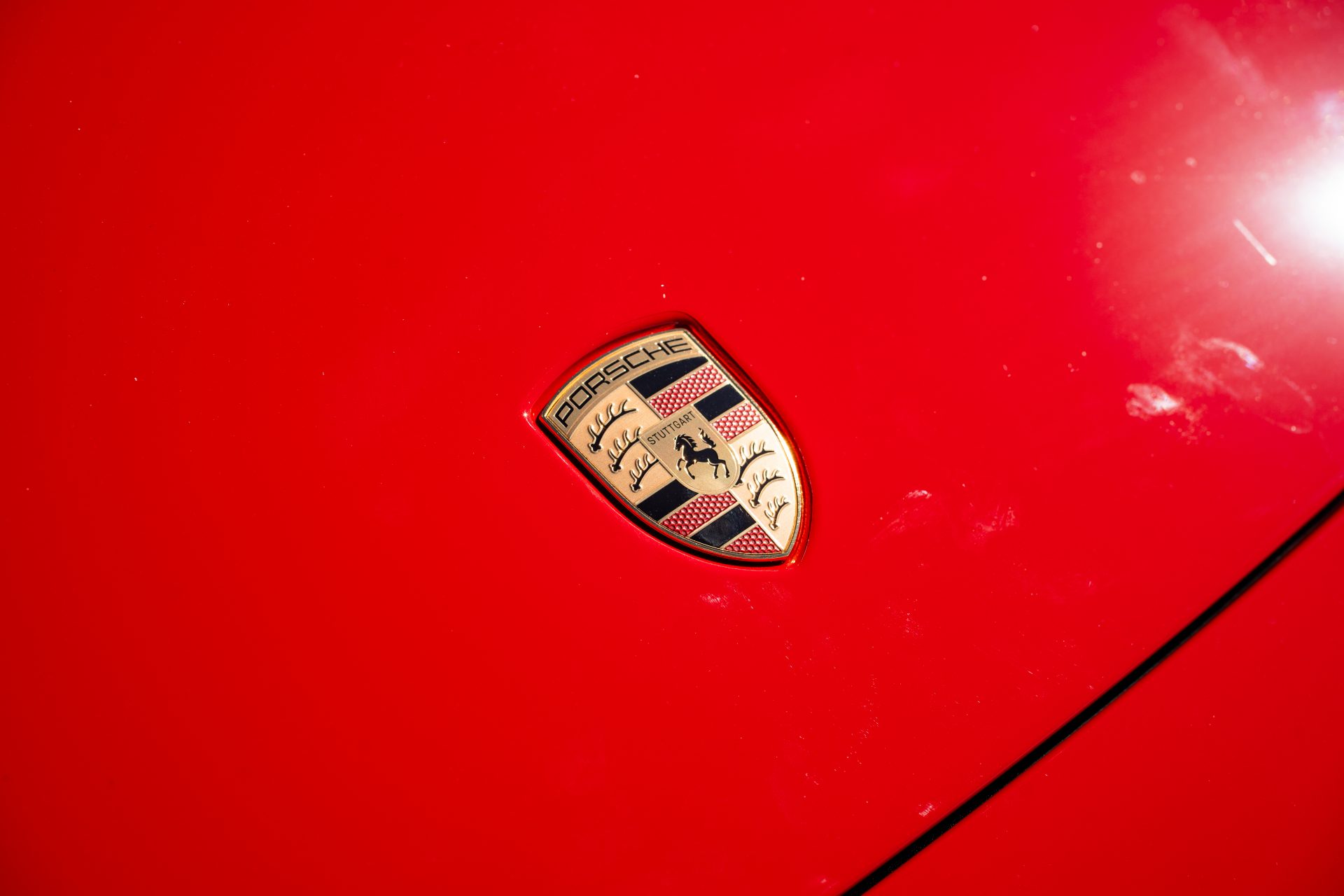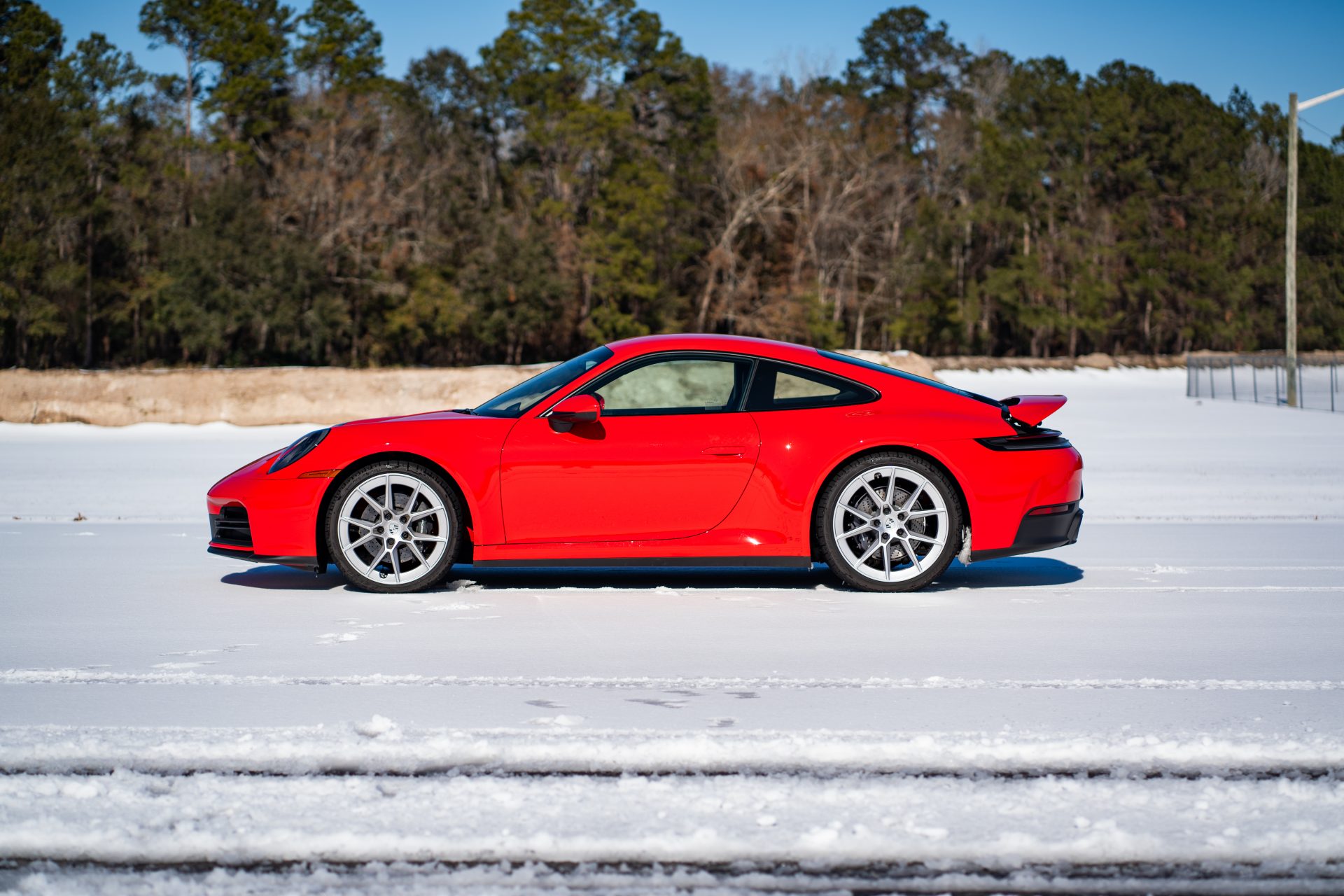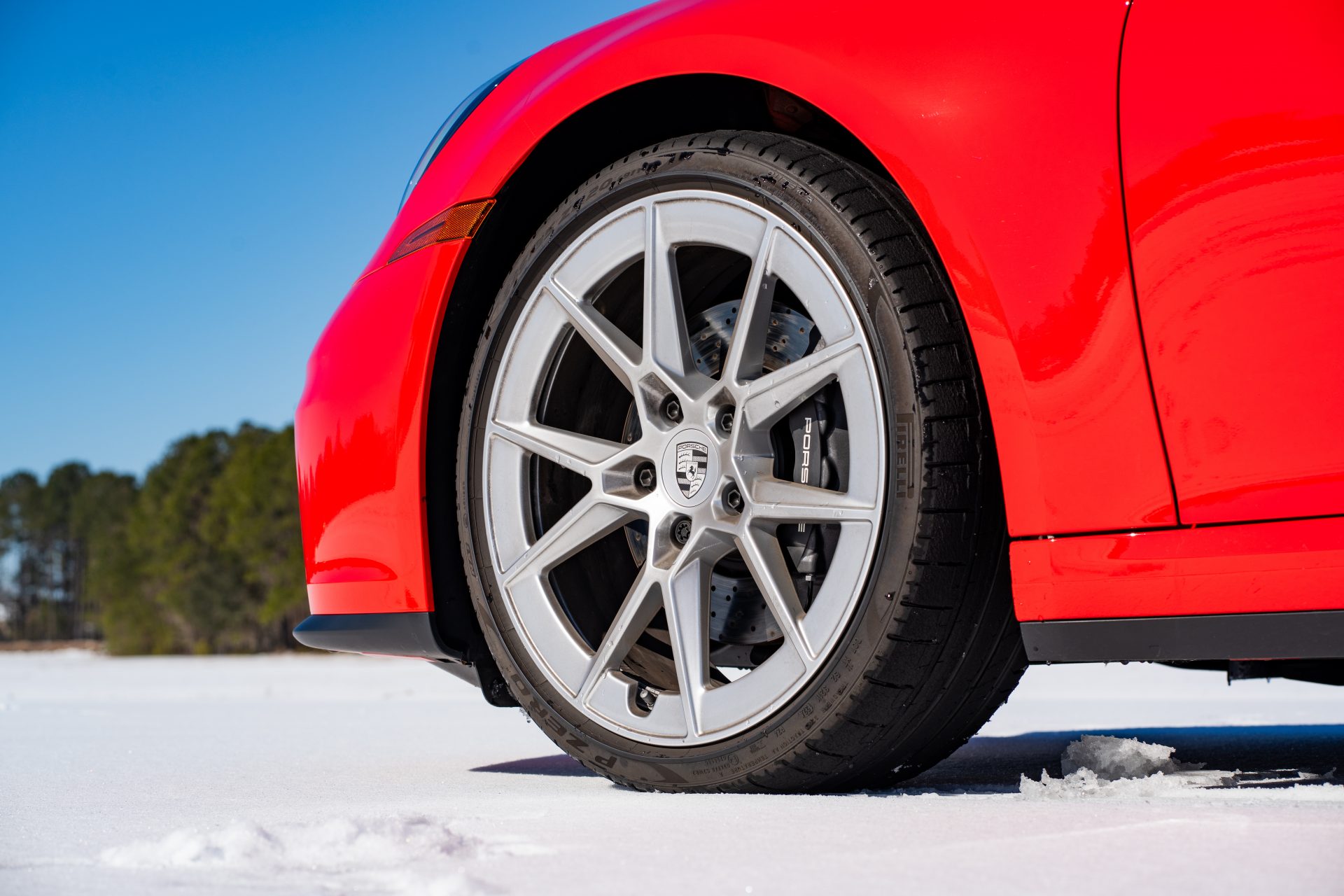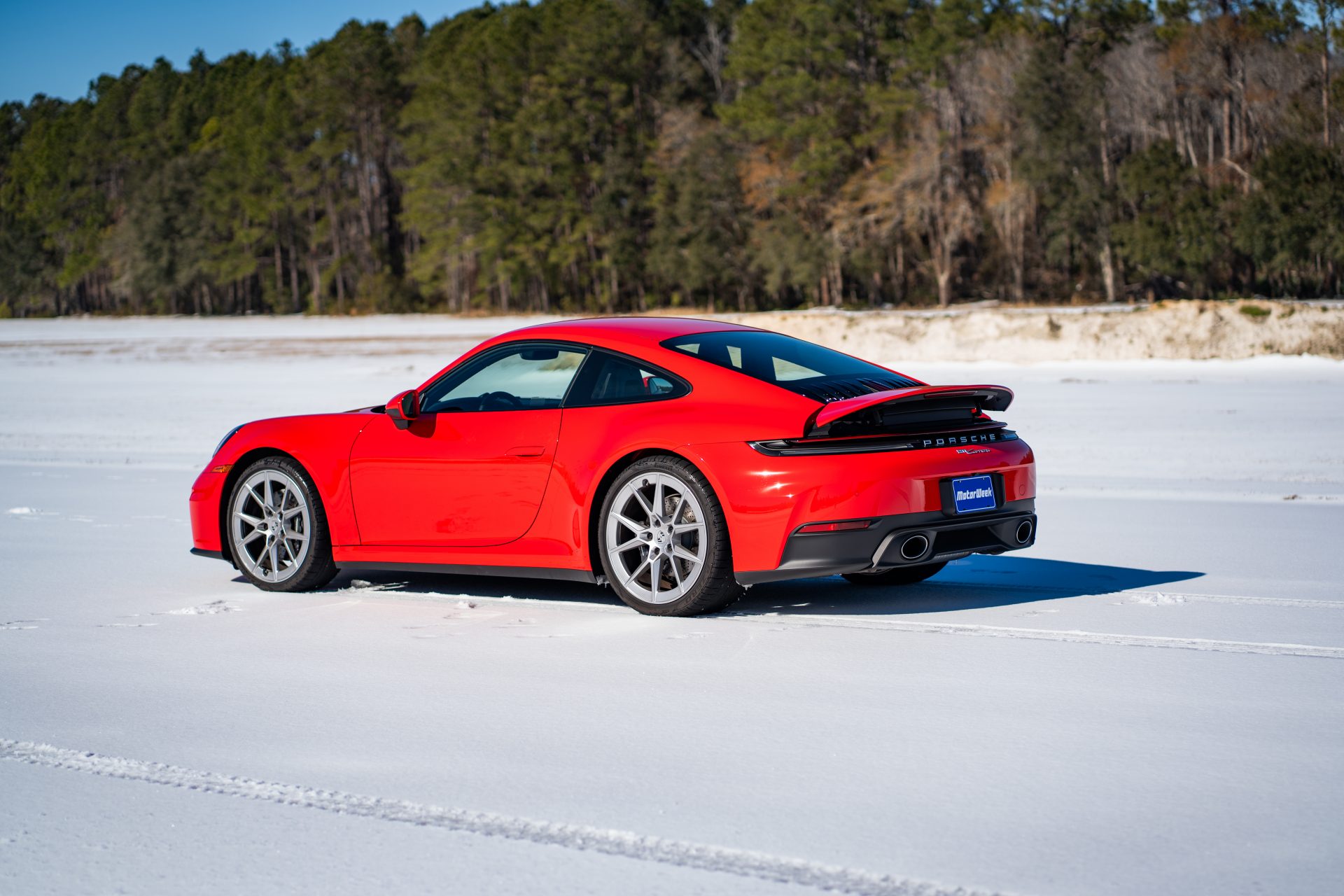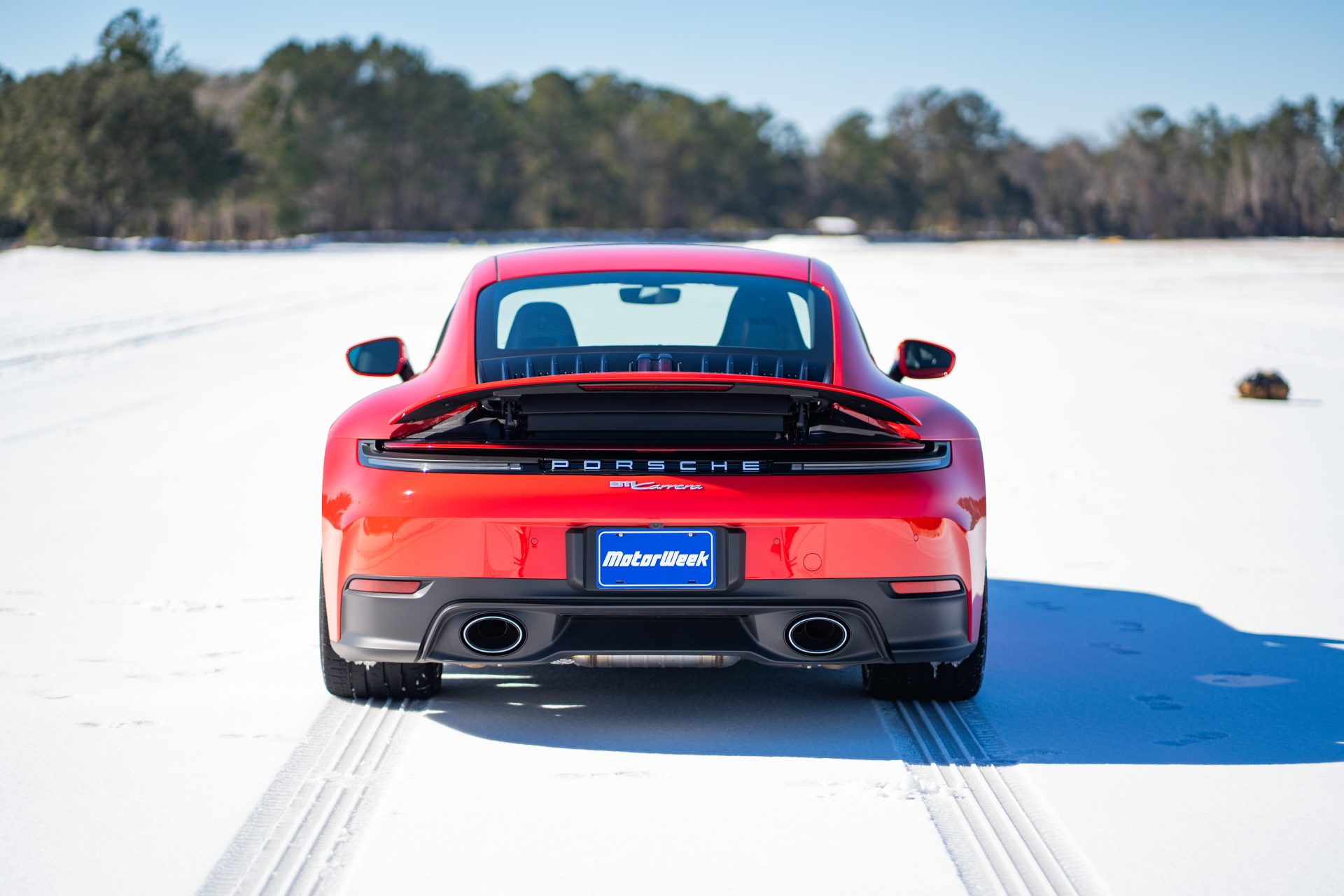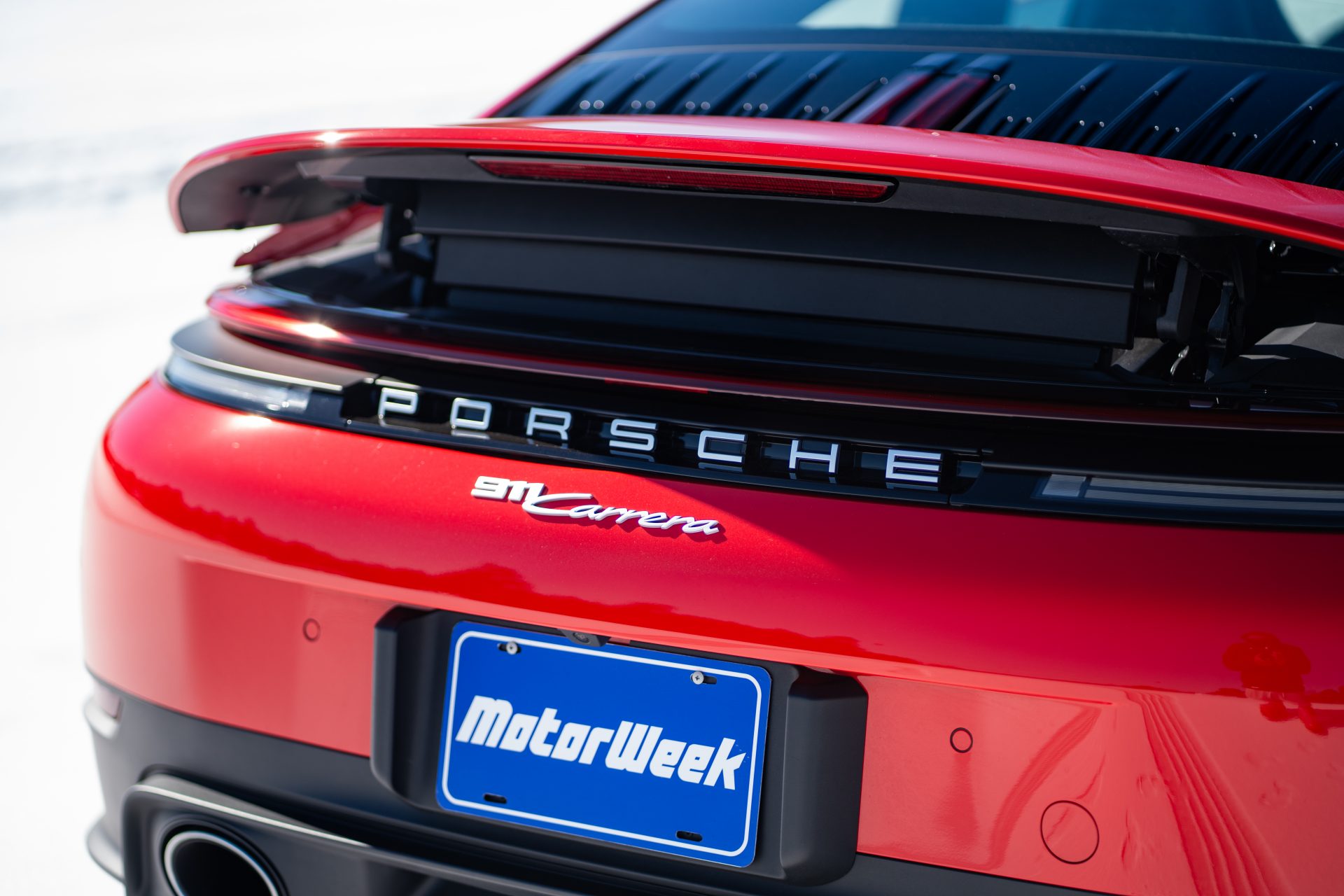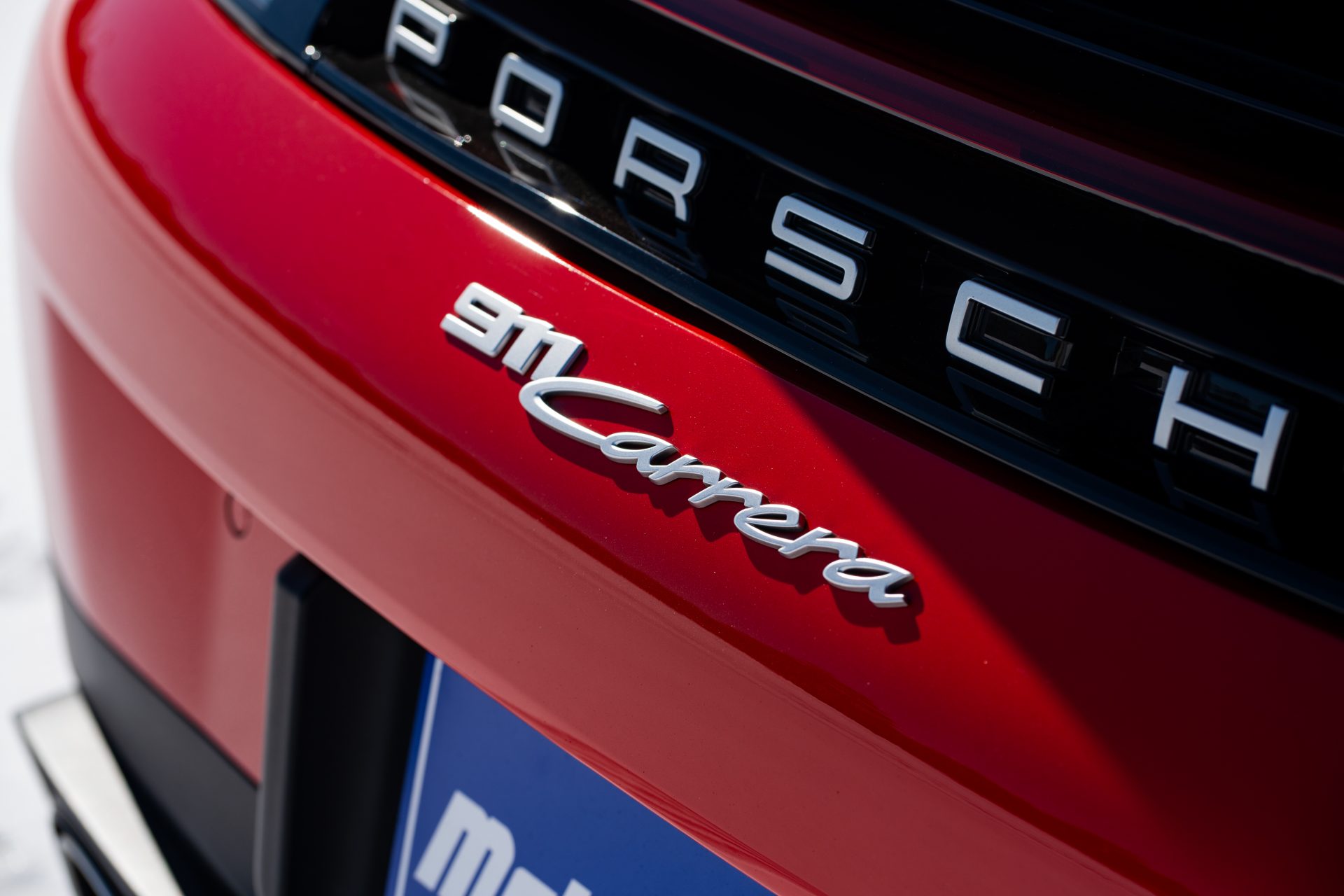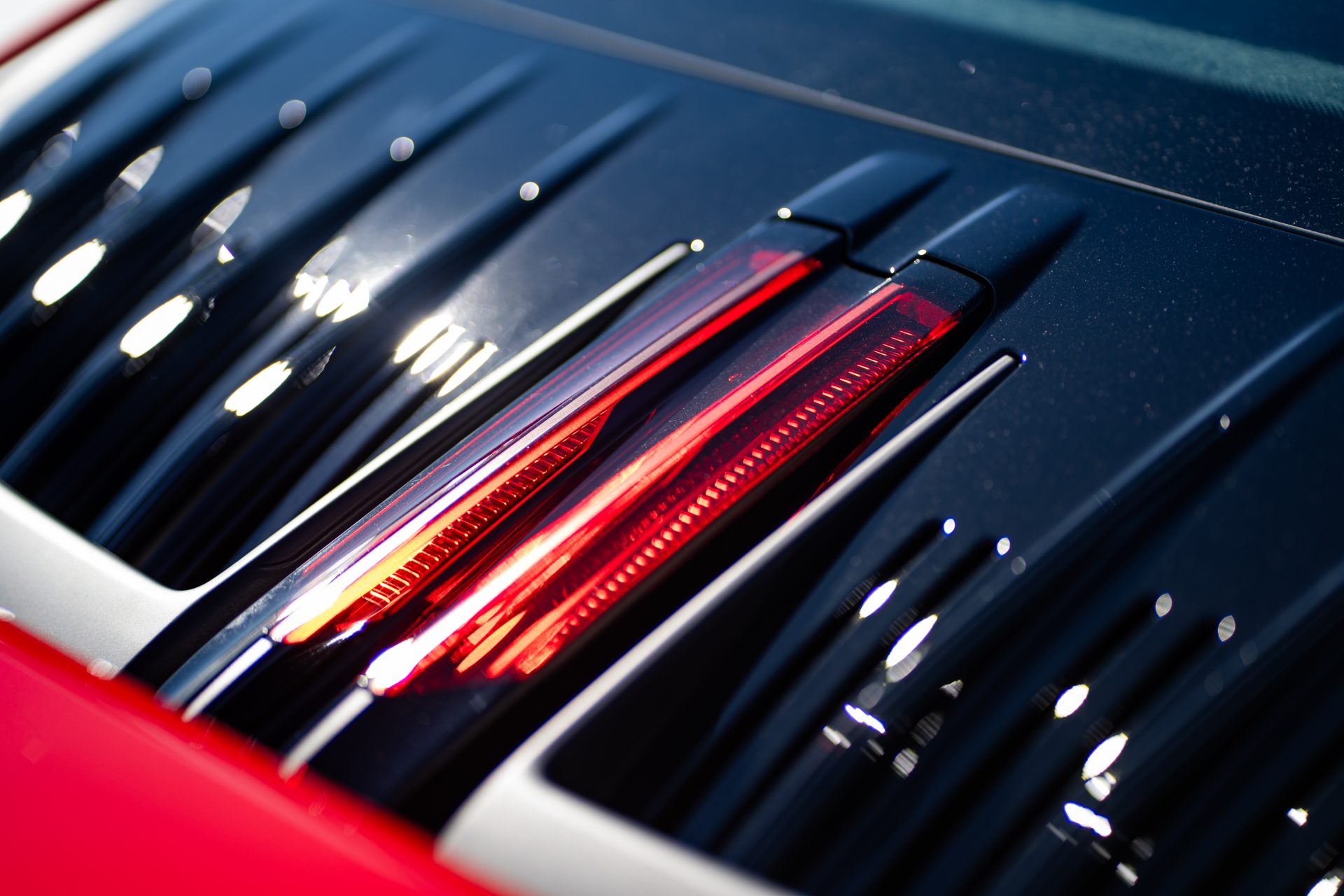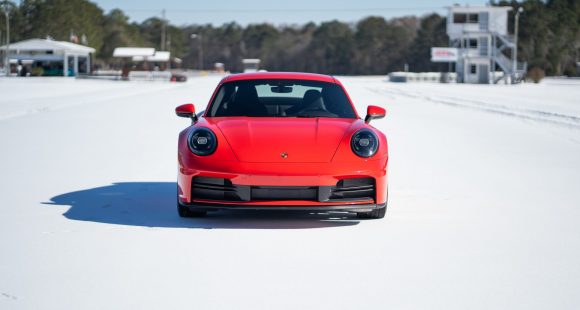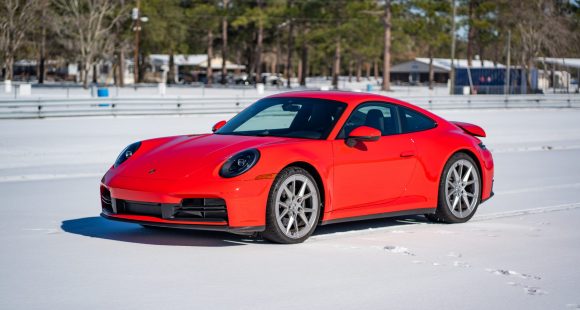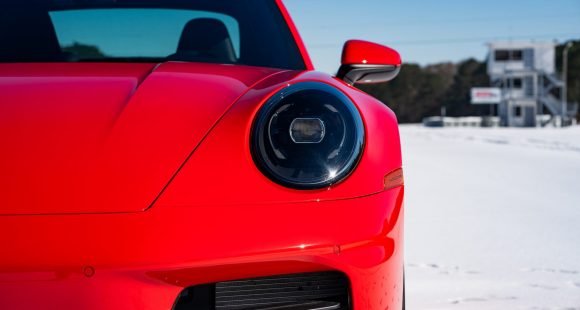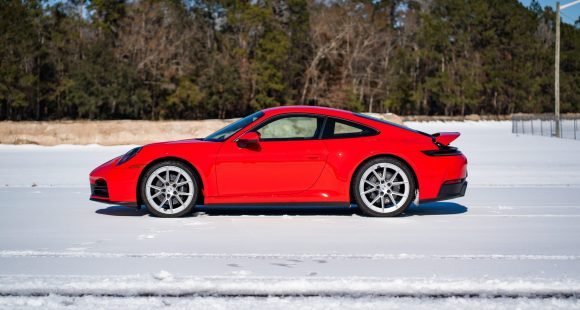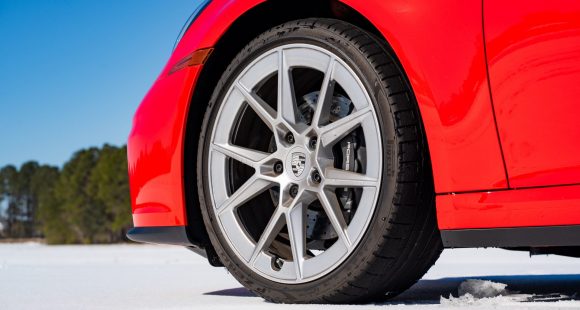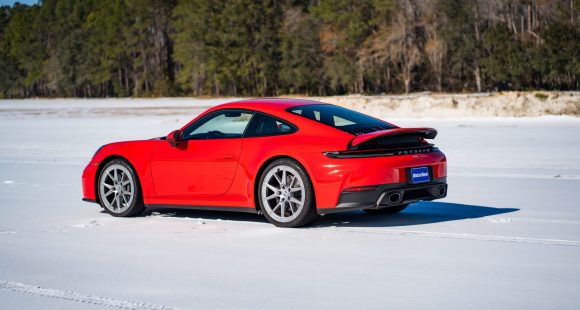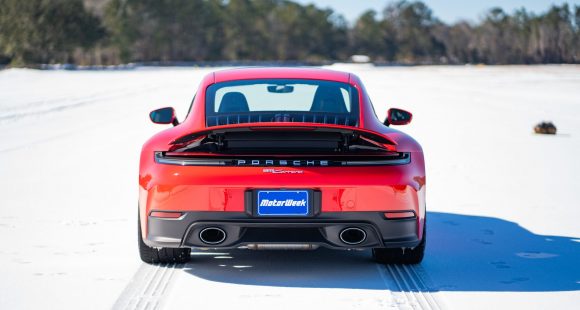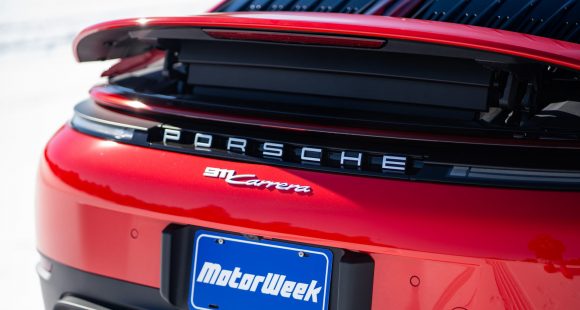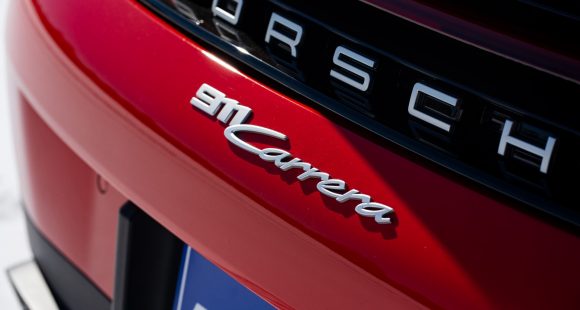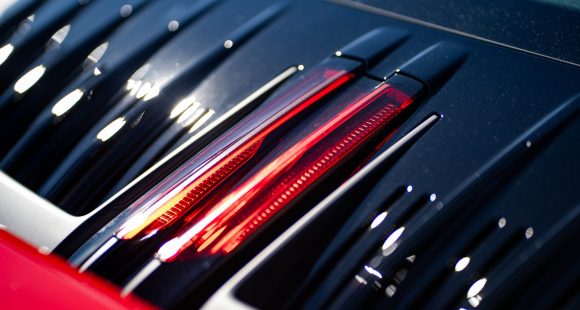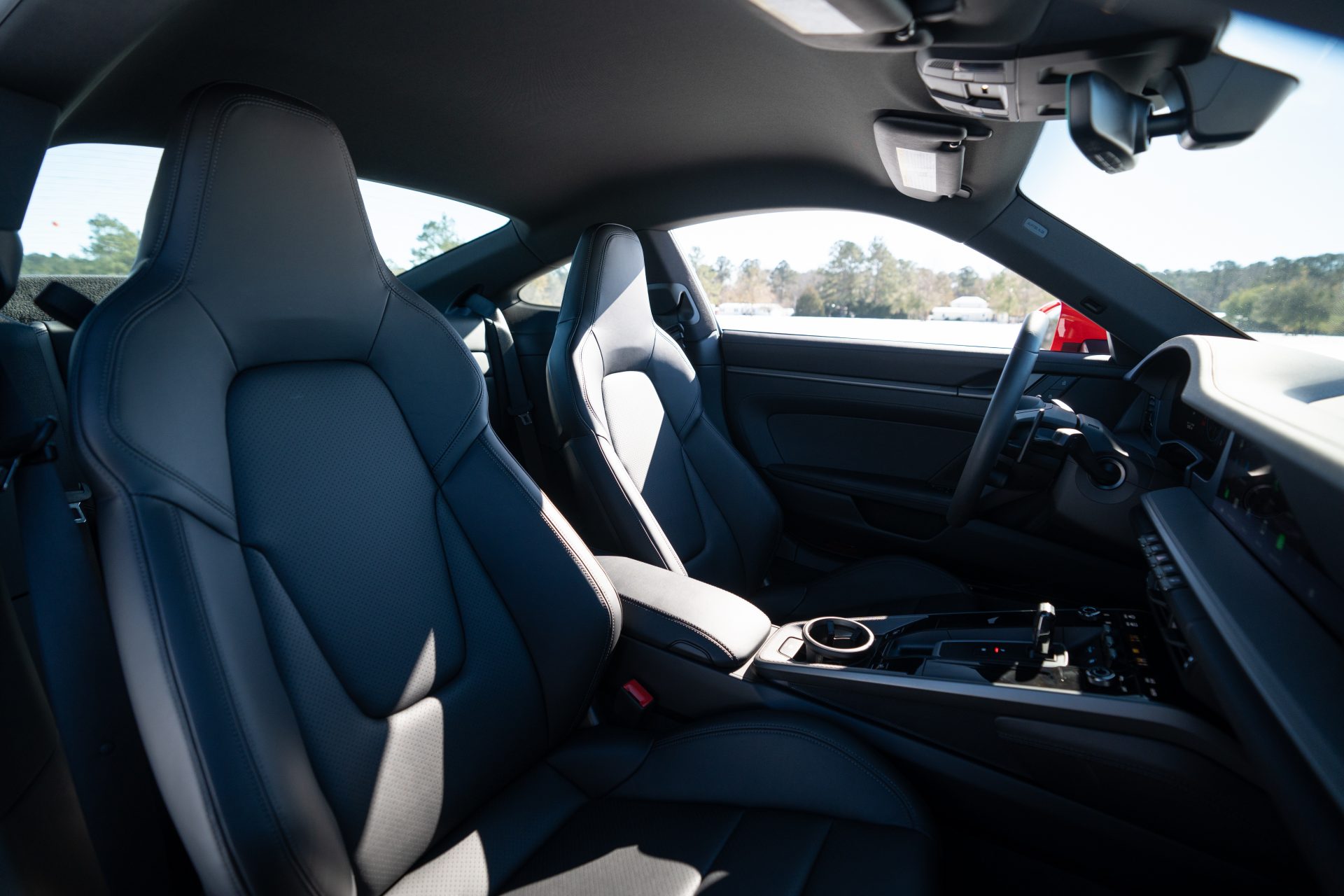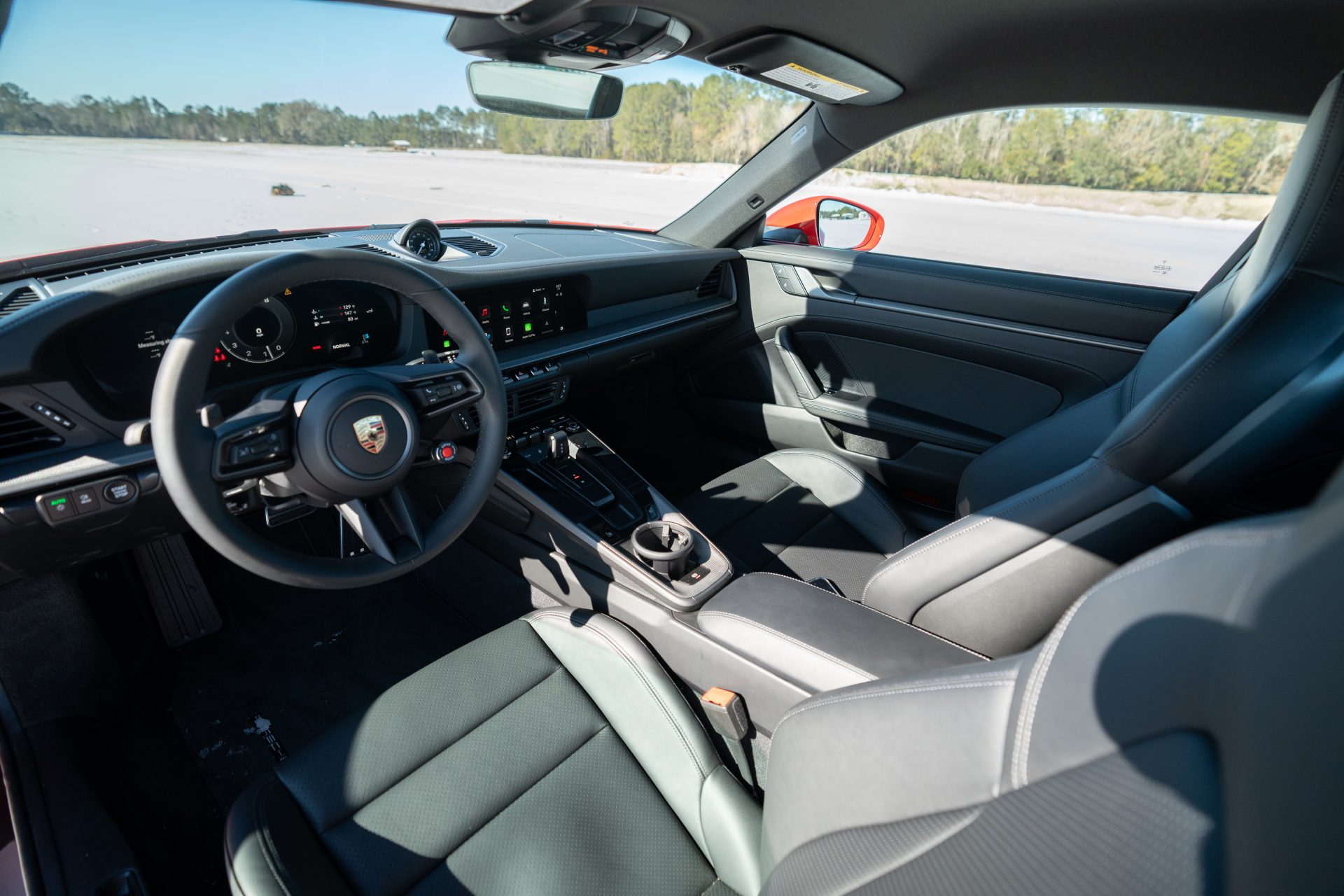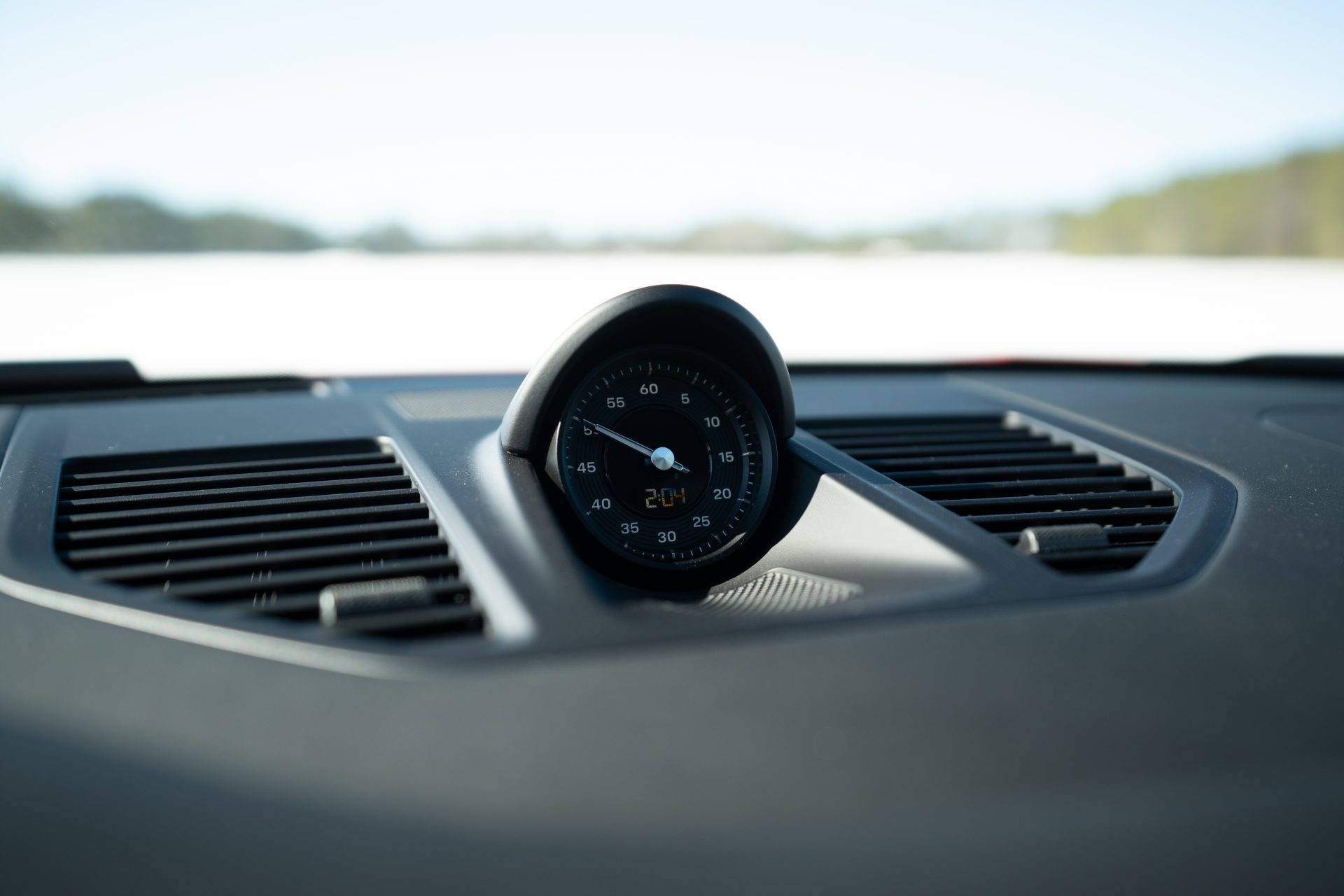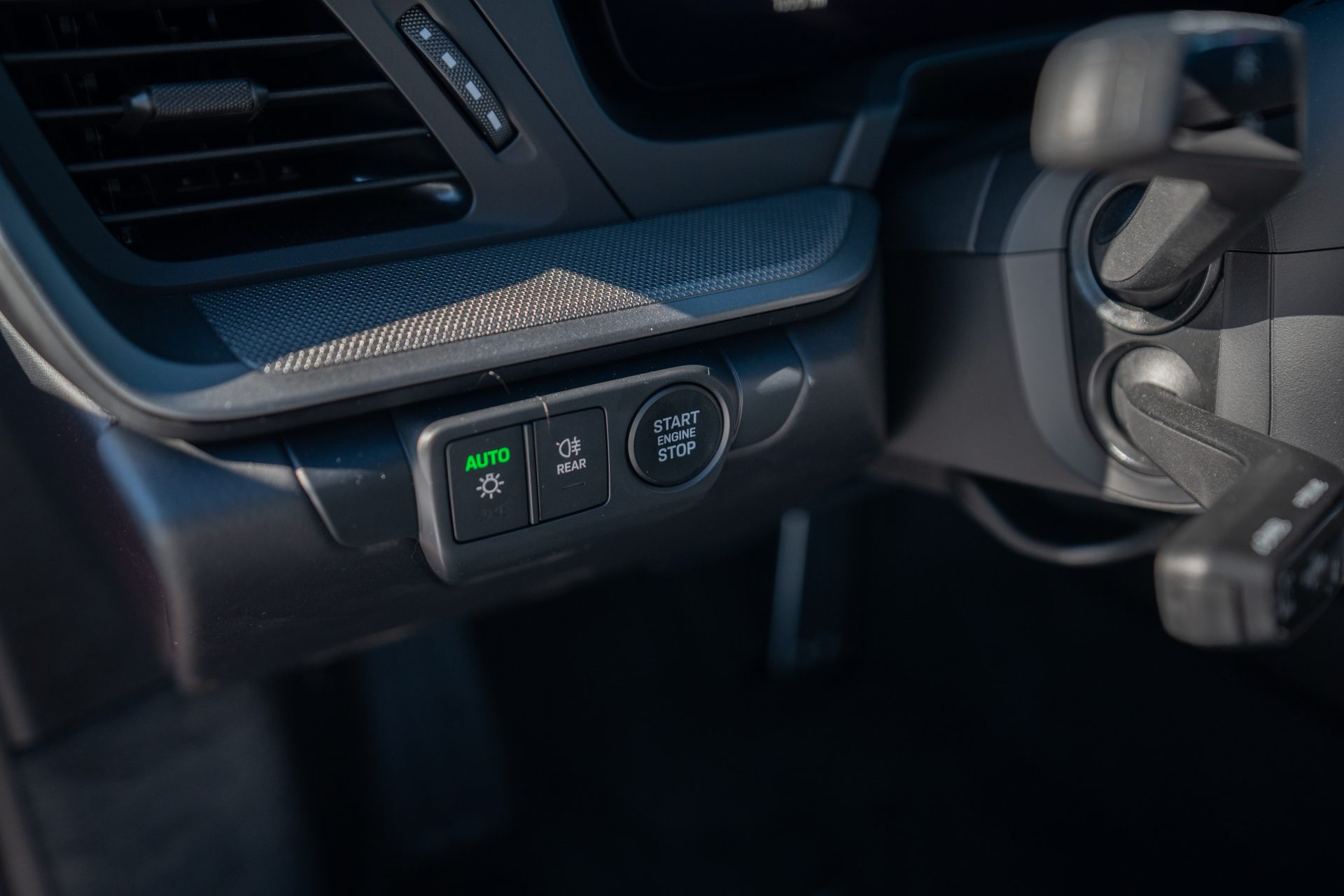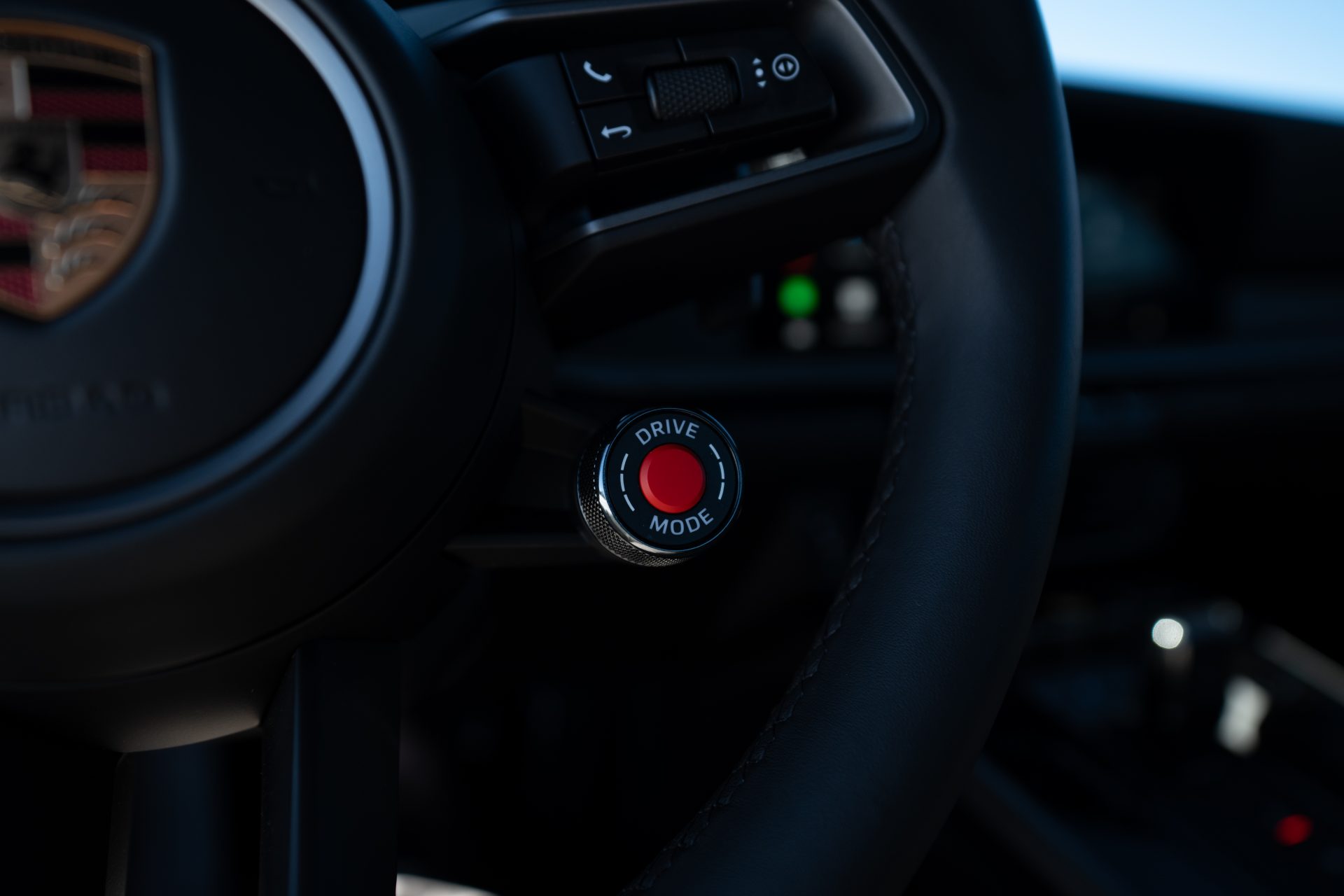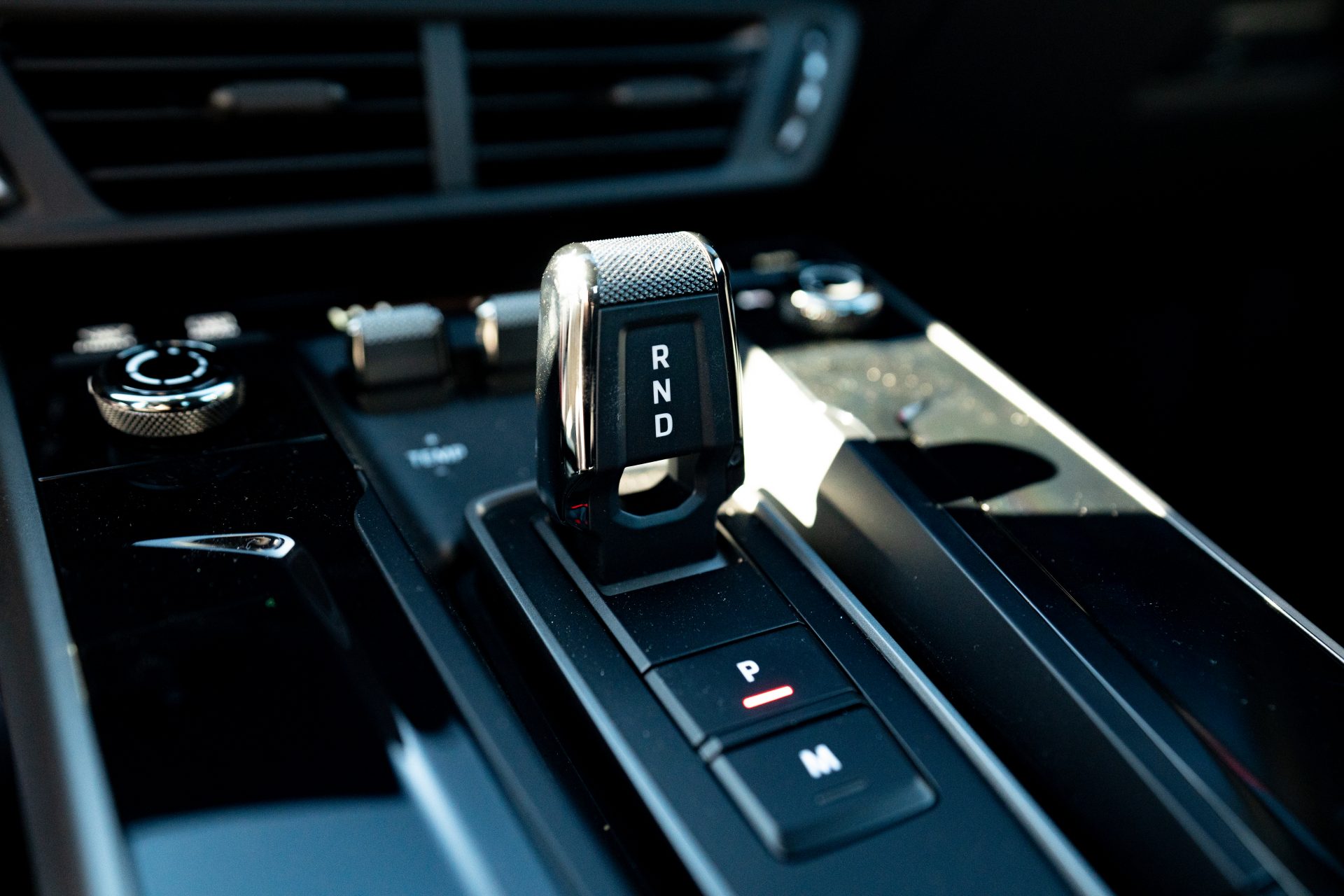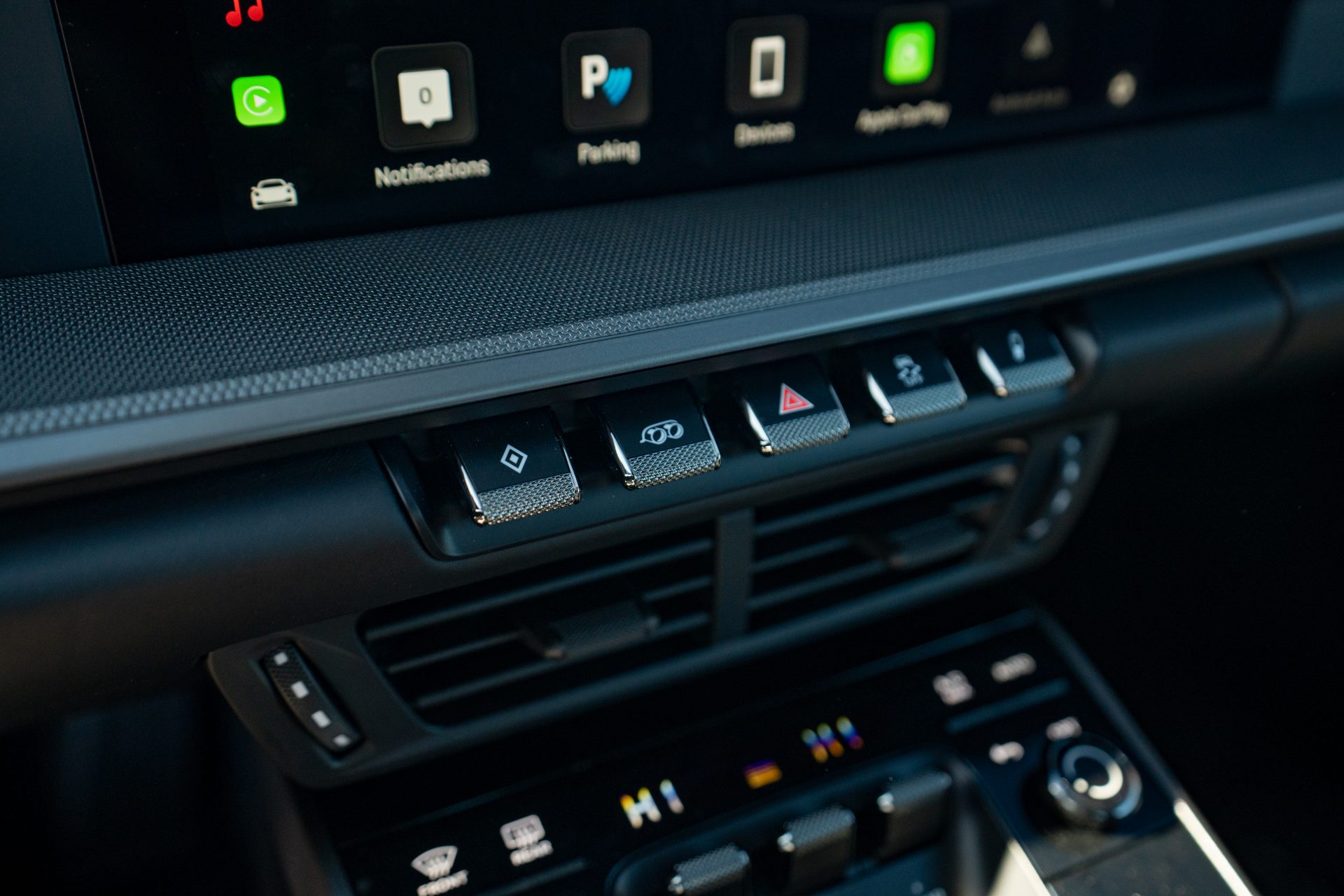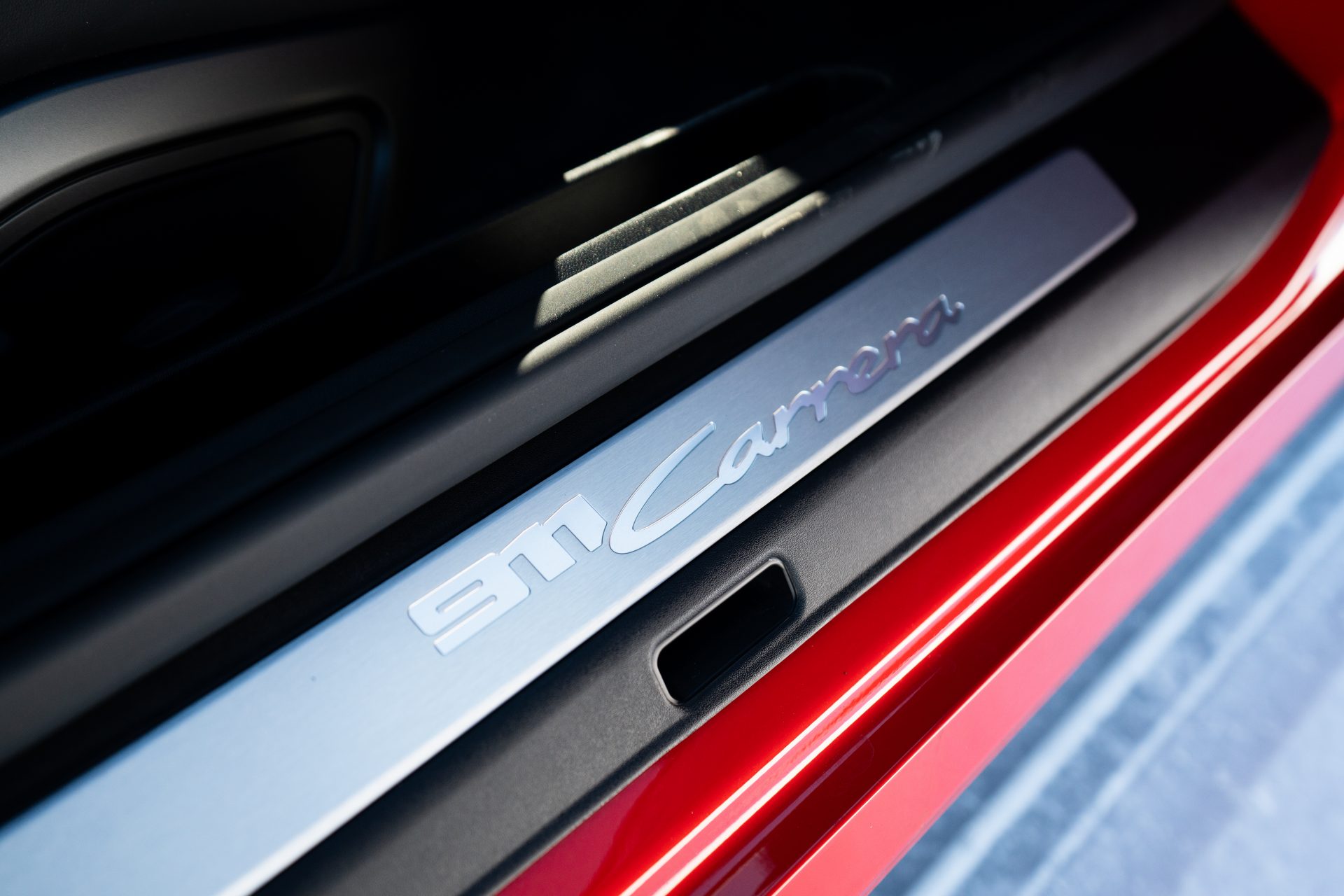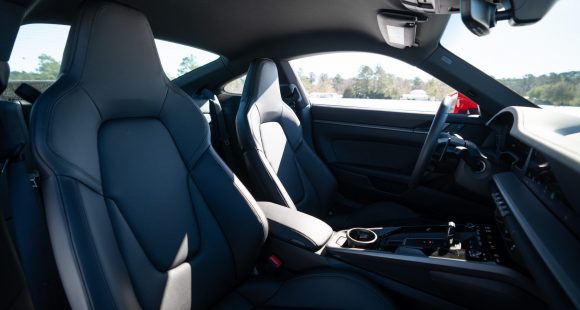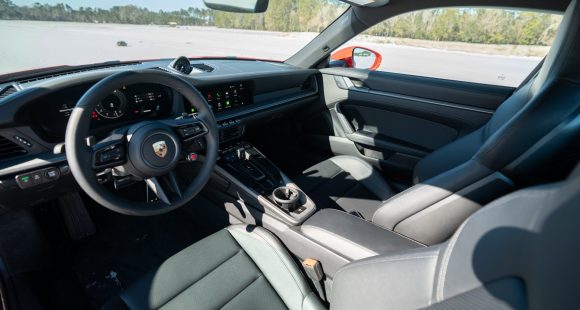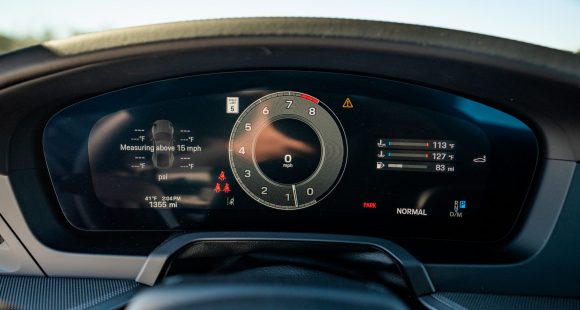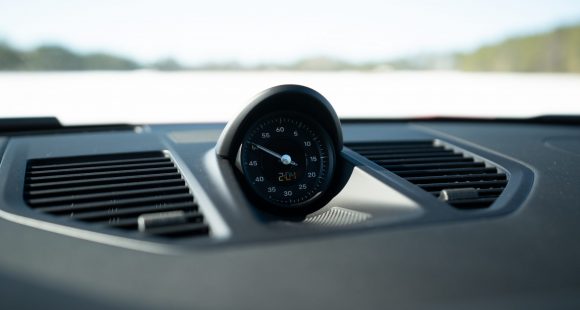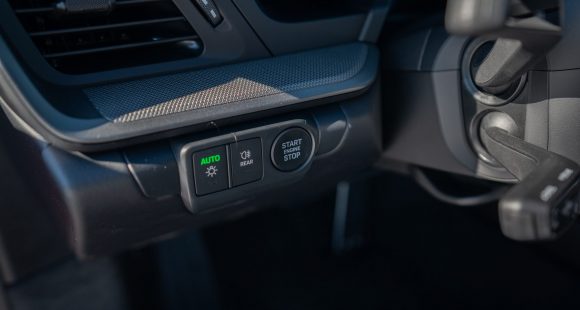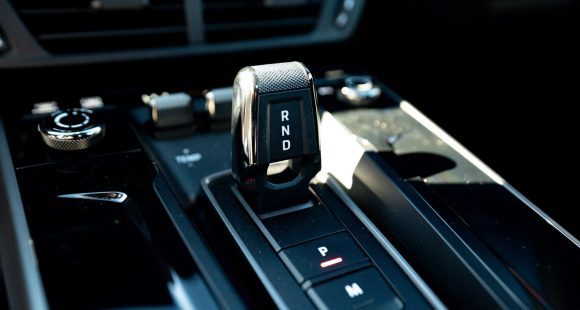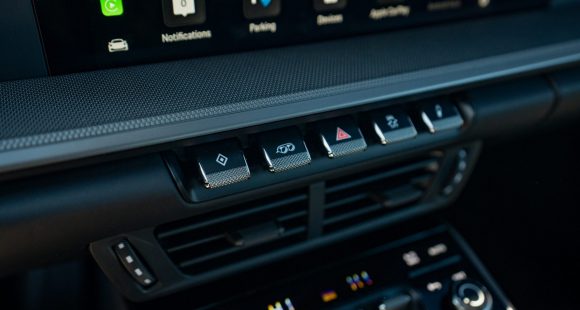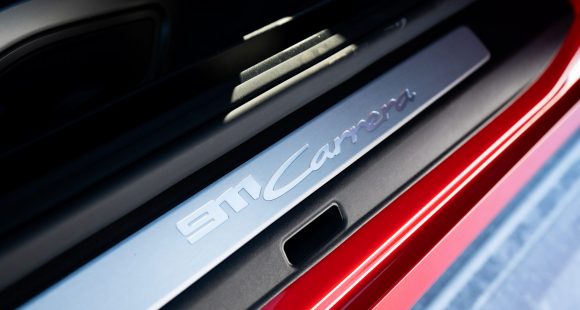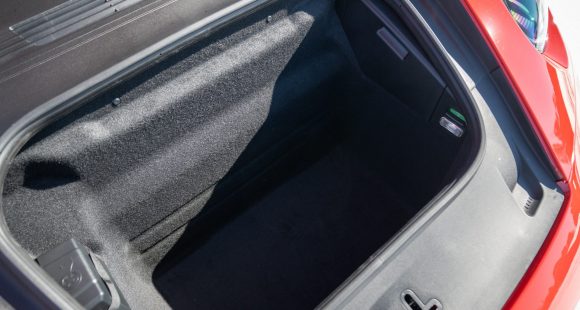2011 BMW 5-Series
With sporty moves and room for a family, BMW’s midsize 5-Series sports sedan has long been a segment benchmark and a MotorWeek favorite. But the all-new 2011 5-Series is something of a renaissance. While still packing a technology and powertrain wallop, it appears less aggressive and more executive. So let’s see if this really is progress.
Right off the mark, our visual take on the 6th generation 2011 BMW 5-Series is that it reminds us a lot more of the current flagship 7-Series than its direct predecessor. Yes, the twin kidney grille is naturally still there, but the previous 5’s Bangle-ized eyebrows are gone.
On the profile, the look is smoother but the character lines are more defined, all stretched over a 2-inch longer body, with a more telling, 3.2 inch longer wheelbase. The L-shaped LED taillights mimic the 7, while the rest of the toned down rear also looks more business than pleasure.
Top and bottom power are familiar. The 528i dons a three-liter straight six, rated at 240 horsepower, a bump up of 10. The 550i borrows the 7’s 4.4-liter twin-turbo 400 horsepower V8. Our 535i has the new powertrain, BMW’s latest 3-liter that trades two turbos for one twin-scroll unit. Output is unchanged, however, at 300 horsepower and 300 lb-ft of torque.
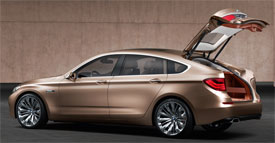 A proper 6-speed manual is still standard on the six-cylinders, while optional with a six and standard on the V8 is BMW’s new gas saving eight-speed automatic.
A proper 6-speed manual is still standard on the six-cylinders, while optional with a six and standard on the V8 is BMW’s new gas saving eight-speed automatic.
Indeed, lots of Efficient Dynamics technologies have found their way into the 2011 5-Series, including regenerative brakes, electric power steering, and engine accessories that only produce engine drag when in use. Later in the year, x-Drive all-wheel drive will become available across the 5-Series lineup.
It didn’t take more than a few minutes at the track, however, to reassure ourselves that this more sedate looking 5 hasn’t dialed back performance one bit. Quick shifting our 535i’s manual delivers 0 to 60 in an impressive, and quite quiet, six seconds flat. The quarter mile mark came up in 14.5 seconds at 98 miles per hour. Both numbers getting close to the 5-Series GT V8 we tested last spring.
Just as laudable was our average 60 to 0 stopping distance of a very short 116 feet. The pedal wasn’t the firmest, but feedback was good, and fade nonexistent, from the all-wheel vented disc brakes.
Still, our handling test would be the big hurdle, an area where the previous 5-Series was a champion. Turn-ins are still quick, even if the electric power steering is a little numb. More curb weight means slightly more body roll, even in stiffer sport mode, but there’ s still little lack of poise, thanks to a new multi-link front suspension. So, when all was said and done, we were very happy.
I didn’t want to like the new 2011 BMW 5-Series. It got bigger, more luxurious, and less like the cars that I’ve always loved. Or so I thought. Sitting behind the wheel, it does feel like a 7-Series, and out on the highway it’s so smooth and quiet. But on back roads when you turn that wheel, well, everything I’ve always loved about a BMW sports sedan is front and center. My conclusion the new 5-Series is a great car.
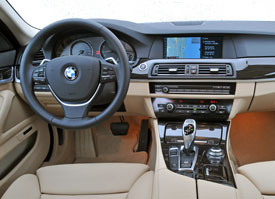 Inside, the new 5’s interior also takes on the 7’s more luxurious appeal. Our 535i came dressed to really impress with optional wood trim. BMW’s sensible, classy, horizontal architecture now has well-integrated 21st-century touches like adaptive cruise control and a lane departure warning system.
Inside, the new 5’s interior also takes on the 7’s more luxurious appeal. Our 535i came dressed to really impress with optional wood trim. BMW’s sensible, classy, horizontal architecture now has well-integrated 21st-century touches like adaptive cruise control and a lane departure warning system.
The fourth generation of iDrive appears either on a seven-inch screen recessed atop the now canted center stack, or with optional navigation on a larger 10.2-inch screen.
Rear seat knee room improves very slightly, while comfort is still above par for second-row passengers. 40/60 split-fold functionality is optional, as is a center pass-through.
In Government Fuel Economy Ratings, our manual 535i is rated at a decently frugal 19 miles per gallon city/28 highway. We managed an average of 22.3 miles per gallon on premium gas. On sale now, the 528i starts at $45,425. Our 535i begins at $50,475, and the 550i has a base sticker of $60,575.
With equal parts thrill and finesse, BMW has clearly taken the right path with this thoroughly modern car. Moreover, the 2011 BMW 5-Series remains one slick-shifting, fine-driving, midsize German sports sedan icon.
Specifications
- Engine: 3-Liter Turbo
- Horsepower: 300
- Torque: 300 Lb Feet
- 0-60 MPH: 6.0 Seconds
- 1/4 Mile: 14.5 Seconds @ 98 MPH
- 60-0 MPH: 116 Feet
- EPA: 19 MPG City/ 28 MPG Highway
- Mixed Loop: 22.3 MPG
2025 Porsche 911 Carrera
Ever Evolving 911 Reaches New Heights
The Porsche 911 has existed for 60 years now! Amazing! And, you could argue that major changes over all those years have been relatively few, as constant incremental improvement is more the way that Porsche does business. With that in mind, let’s hit the track in the latest 911 and see what constant improvement means for 2025.
We’ve driven so many 911s here at MotorWeek, each seemingly more special than the last, so it’s a bit refreshing to be ripping around Savannah’s Roebling Road Raceway in a 2025 Porsche 911 that’s about as close as you can get to base these days. And the fact that it’s just as fun as all those exclusive pieces says a lot about how far the 911 has come. Perhaps it also speaks to how much a base 911 will set you back today as well; more on that later.
For now, we’re just thinking about the next apex, holding steady throttle as we approach, and getting on it way sooner than you’d expect without upsetting anything, as the 911 rockets off the corner thanks to tremendous grip and a PDK trans that finds the perfect gear before we even gave it a thought. Even with very cold track temps, we never struggled for grip or battled any wheelspin coming off of corners. And trying to land it in that perfect spot in braking zones is easy with strong brake performance that was predictable and consistent lap after lap; no wandering, and great feedback too.
Yes, even the standard 911 is near pure perfection on a racetrack. It gives you all the right feedback, stays incredibly flat through corners, makes you always feel totally in control, and again is just plain fun. Unless you’re chasing lap times, there’s really no need to head further up the 911 tree. Though it is worth noting the few upgrades that were on our Carrera did help the situation a little. The 20- and 21-inch Carrera S wheels enabled plenty of grip from the 305 Pirelli P Zero tires, the Sport Chrono Package allows 0-60 sprints of 3.7 seconds, an extended range fuel tank meant we could lap all day without having to fill up, and the fantastic Sport Seats provided great support and better comfort than we remember experiencing in a 911. The Sport Exhaust system didn’t add anything to performance, but made things sound a whole lot better, and the oval silver tips look great too.
We never struggled for grip or battled any wheel spin coming off of corners.
Our track time got cut short thanks to a rare snowstorm in Coastal Georgia, but the white stuff and blue sky made the perfect backdrop for our Guards Red Carrera. Exterior tweaks for what is officially the 992.2 include a reshaped front fascia with improved aerodynamics. All front lighting is now contained within the Matrix Design LED headlight housing. The rear fascia has also been smoothed out, the license plate moved higher, and Porsche 3D block lettering spelled out across the back beneath the active rear spoiler and new decklid grille.
Even without Turbo in the name, the standard 911 engine is indeed a turbo these days, a 3.0-liter flat-six twin-turbo delivering 388 horsepower and 331 lb-ft strictly to the rear wheels in the Carrera Coupe.
Inside the cabin, the 911 continues its slow crawl towards the modern, now including a 12.6-inch fully digital gauge display and a start button located on the left side of the steering wheel, with drive modes easily accessible on the wheel itself. In another no brainer move, Porsche now makes the rear seat a no cost option, so you can choose if you want it or not.
Government Fuel Economy Ratings are 18 City, 25 Highway, and 21 Combined. That’s only slightly worse than average for the Energy Impact Score; 14.2 barrels of annual oil consumption with 7.0 tons of CO2 emissions.
The good news is this 911 had the fewest number of options of any Porsche that we’ve tested in some time, and it was still plenty awesome; the bad news is, a base Porsche 911 Carrera Coupe now starts at $122,095.
But can you really put value on “the force,” this mythical power that Porsche seems to have, that somehow turns average drivers into great ones? It’s useless to resist as far as we’re concerned, as it only gets better with the 2025 Porsche 911 Carrera.
Specifications
As Tested
- Engine: 3.0-liter twin-turbo flat-6
- Transmission: 8-speed PDK
- Horsepower: 388
- Torque: 331 lb-ft







